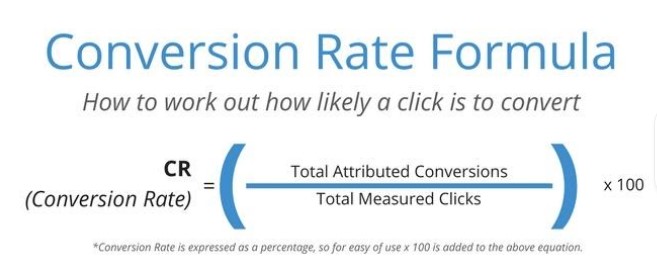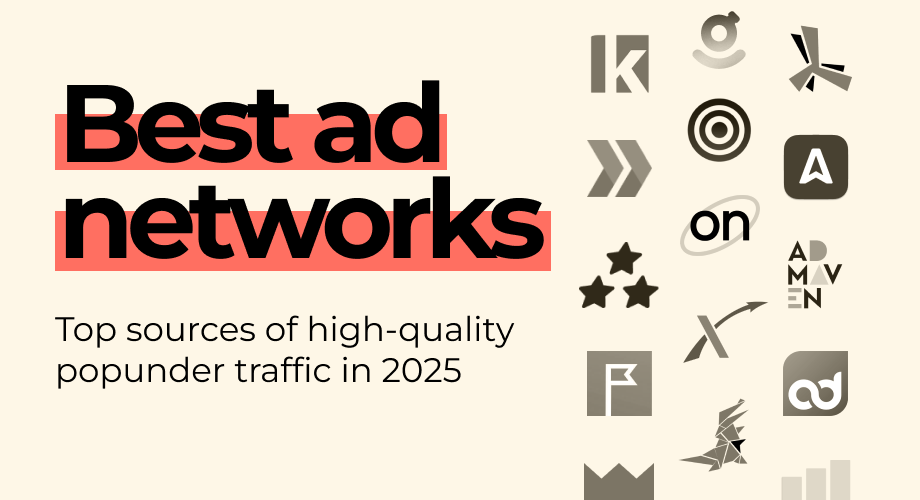Conversion tracking
Let’s speak about the numbers. When you start doing your digital stuff, you are dealing with a lot of information. Often, we are thinking of questions about the management, challenges, results etc. So how about the results? How is it possible to understand if you are running up? The answer is with the help of measurement!
The only way to assess your results, success or just to understand how it is going is the system of conversion tracking. In fact, it’s a great opportunity for the digital sector, bearing in mind that traditional forms of marketing are in a long way from this capacity.
Conversion tracking allows you to see all the detailed information of actions that are taking place on your website. You could monitor the performance of your campaign with the help of different platforms that are aimed to track all the actions in order to explain to you what is really going on, what is effective and what is needed to correct.
Perhaps you have already understood that conversion is counting of valuable actions on your resource. Now the question is what is valuable? Actually, you can take into account any action that is meaningful for your business, so it is any action you want people to complete.
When users react to your messages, it means that you get a conversion and then need to measure the quantity of them. What should be considered as conversion? There could be some actions like just signing up or real purchase. Here we have some prime examples of actions that could be considered as a conversion:
- To click the link
- To install an app
- To download something
- To make a purchase
- To register on the site
- To sign up for a subscription
When speaking about conversions it’s impossible not to mention the main indicator that means how many percent of users complete their purposes here. It is called conversion rate or CR. To understand how you can measure the conversion rate, let’s have a look at this formula:

CR formula
You can see here how to measure the performance of your advertising campaigns. Conversion rate is able to show you are successful in getting people to do what you want them to do. So the higher is your rate, the better your campaign is.
When you track conversions it gives you a chance to understand which categories of conversions you are reaching and where they are from, what time users are willing to interact with your ads etc. This data allows you to make your campaign effective.
Why Is Conversion Tracking Important?
We have already told you that conversion tracking is one of the points of your success in a digital sector. Actually it’s impossible to see a whole picture, without numbers that conversion tracking gives you.
Any type of a website requires a conversion tracking system. What for? There are so many reasons.
- To make changes if needed. When you understand what is working properly and what is not, you can make changes to make working all the processes. Instantly monitoring and making changes accordingly helps your campaign to be successful.
- A/B testing of different ad campaigns’ variants. When you don’t exactly know what will be working best, just try it! When testing different kinds of ad campaigns you are able to choose optimal.
- To improve ROI. Nor only the CTR should be high, but there should be a large number of conversions. When you will optimize these two targets, you are going to improve your ROI.
- To compare your progress. Creating a benchmark you are able to keep track of progress. It is important to continue in improvement.
How to use conversion tracking to improve campaigns
There is no doubt that all the companies are trying to create strategies that would meet the requirements and bear fruit and want to avoid money or time wasting. It’s not easy to understand what is working best, especially on the first steps. All the components of your campaign such as actually ads, keywords etc should be logical and really productive. If you want to guarantee your results, you need some kind of testing. The best way of testing is to setup conversion tracking. Then you can hit the target.
When you optimize your advertising costs by the use of conversion tracking you get wider opportunities to improve your campaign. Not only conversion maximizing makes sense.
It’s important to be on the lookout, to keep all the parameters before the eyes, not losing site of any small details. It is effective to try all the ward combinations, keywords, different variants of connections. That’s how you can understand what exactly works for you.
Google Analytics Goals
To start interacting with conversion tracking is better from the basics of it. The first step will be to create goals in Google Analytics and connect them to actions on your site that would measure how well your site meets your objectives.
Actually, setting up goals in your analytics is not difficult. The important thing is to understand the difference between key performance indicators (KPI) and general-purposes of your project. KPI shouldn’t be tracked as goals.
Now we are ready to give you our short notes on how to set up goals in Google Analytics. Please, look through the instructions and make sure that it is easy.
At first, start with Admin on Google Analytics.
You have two options: a template-based goal format or custom format.
The next step is to choose Goal Type. Here you have to choose between Duration, Destination, Pages/Screen per Session or Event.
Then complete the structure of your goal with different entries.
So, this is one of the basic directions to go in order to track a conversion. By the way, it is possible to see only the total number of conversions, without detailed information.
Facebook Conversion Tracking
Facebook popularity is quite high. That is to say that the audience is large, that is why you are allowed to reach it using Facebook tracking conversion tools.
In order to set up Facebook conversion tracking, you have to do four basic activities.
At first, you need to create the Facebook Pixel. So, make an account if you need it. Then chose “Create a Pixel” and name it, accept necessary terms and conditions.
There are two codes that you need when tracking on Facebook. These are pixel base code and event code. Pixel base code differs from the event in its placement. Base is on every page, and the event is only on specific web pages.
It is not a big deal to add the code to your site. You can do it by yourself with the help of Google Tag Manager, or just send it off to a web developer. Tag Manager makes the process of setting up tracking easy. If you are using Wordpress, there are many available plugins for installing GTM.
You select “Tags” and choose “New” to create your Facebook tag. Then choose Custom HTML and paste your pixel code into the box provided. Then choose “All Pages” to set up the code to all of your pages.
Then you are moving to set up some specific points of conversion. You need to understand which goals should be tracked after people visit your website.
And now, you choose the type: Custom or Events for tracking.
Twitter Conversion Tracking
When you are going to use Twitter to track the conversion, you will definitely start with tags. You should be ready to choose the type. There are two: universal tag or single-event tag. To understand what is mostly suitable for you, we will be giving short descriptions of these. So, universal is a single code tag and it is for tracking multiple site actions or conversions, when you place it across your website. But single-event is aimed to track a single conversion and it’s only a unique fragment of code.
Actually, Business Twitter recommends using universal tag in order to make the process easier.
Then you are ready to put a tag to your website. To do this you need to login to the twitter ads account, go to “tools” and then select “Conversion tracking”, then go to “Generate a website tag for conversion tracking”. After that paste the code’s fragment into your webpage. You can put it before HTML </body> or inside a container tag or tag management system.
The next step is to decide what to track, so you need to create a conversion event. You will see a self-titled button to do it. Now complete the following form.
Now the step is in including your conversion event in your campaign. For it you need to select “Create a new campaign”, to fill in the campaign and group details. While doing this, click to “Website conversions”. There will appear a new window, named as “Key conversion metric”, where you can select your conversion event.
Google AdWords Conversion Tracking
Who wants to appear at the top of Google? Everybody! Because of this thing Google AdWords is the most desirable way of advertising for the majority of us. Usually people rely on this form, because when you are on the top of Google feed it guarantees excellent results, despite the quantity of allocated money. So it might be rather expensive to compare with others, but it'll be worth.
Google topline is not the one and only advantage of AdWords. Actually, another thing is the comfort of using this. It is easier to work with it because of the lack of different types of events.
How to set up conversion tracking at Google AdWords? One way is to use Google Analytics goals that we were speaking about before. Google Analytics and Google AdWords should be connected with each other. To link these two you need to press “Admin>AdWords Linking” in Google Analytics.
Then return to Google AdWords, go into “Tools” and “Google Analytics” (before doing this make sure that you have already a Goal). You will see a list of goals that is possible to choose and import. So click “Import” to do it.
After this you have a possibility to create a kind of reward for sending feedback form. Then you will see the conversions that your form is created for.
How to setup advanced conversion tracking with AdOperator
We are going to help you to set up conversion tracking on our AdOperator platform. You can do it with a help of detailed manual below:
Conversion tracking URL template:
https://xml.adop.co/conversion?id={id_goal}&c={conversion}&count={count}&value={value}
Parameters
id_goal - Current goal id (will appear after saving the campaign)
conversion - Click Id used for conversion tracking
count - Number of conversions (optional, default value = 1)
value - Conversion value (optional, default value = 0)
All parameters should be URL-encoded.<.p>
Usage
Add {conversion} macro into text ad destination URL (mandatory)
Create Goals in Conversion Tracking
Add JavaScript code to your website or use tracking services
Example
For example, your tracking URL is:
https://site.com/?c={conversion}&utm_campaign={campaign}&utm_source={subid}
A user from the publisher goes to the advertiser's site and the final link looks like:
https://site.com/?c=HRbjD4K4FvE&utm_campaign=12345&utm_source=123456789
You need to get the conversion id from the link (from param "с") and use it to send GET request to tracker:
https://xml.adop.co/conversion?c=HRbjD4K4FvE&id=123&count=1
where "id" is goal id.
You can send using a image pixel:
<img src="https://xml.adop.co/conversion?c=HRbjD4K4FvE&id=123&count=1"
Conclusion
So now it is clear that using conversion tracking is a vital requirement for every campaign to be effective. If you are going to maximize your results, check what is working for you before losing money or optimize all the coats, the solution is to setup conversion tracking.
All the ways to do it are quite easy and achievable. You just need to choose the appropriate platform for doing this. Thus, use our instruction to start your personal monitoring!


